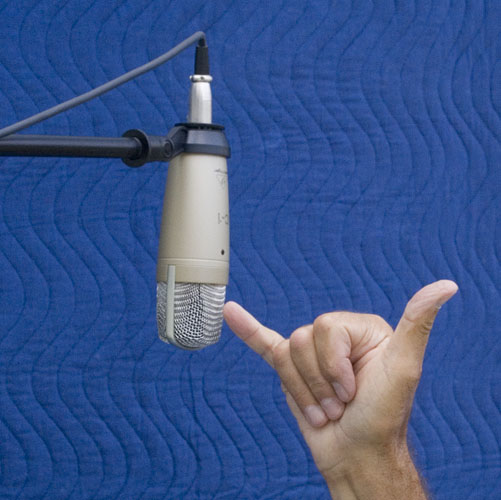OK. Here we go loop de loop.
Have you ever used Noise Reduction?
Have you ever installed a custom settings into equalization?
Stop here and we’ll take that in a separate post.
\
Export the raw reading as WAV and save it in a nice safe place. Edit a copy of the raw reading. When the dog eats your laptop, you should not need to read it again.
Open the work on the timeline—or just keep it open if you’re doing this as one job.
Select the whole performance by clicking just right of the up arrow.

Effect > Notch Filter: 120.0Hz, Q3 > OK.
Effect > Equalization> Curve: BetsyAndTacy, Length: 5000 > OK.
------ These are the three tools in Mastering 4.------
Effect > Equalization > Select Curve: Low rolloff for speech, Length of Filter: about 5000 > OK.
Effect > RMS Normalize: Target RMS Level -20dB > OK.
Effect > Limiter: Soft Limit, 0, 0, -3.5dB, 10, No > OK.
And then a pass through Noise Reduction.
Select about a second or so of room tone.
Effect > Noise Reduction > Profile.
Select the whole clip.
Effect > Noise Reduction, 6, 6, 6 > OK
And you’re done. That should be your submission master. It should look something like this (except denser). These relative sizes are correct for an ACX show.

Export that as a WAV and save it somewhere safe. ACX wants you to submit as MP3, not WAV. The problem is you can’t cleanly edit MP3, but you can WAV, so WAV should be your final archive. Now export the MP3 for submission.
File > Export > Export as MP3
Filename on top
File Type: MP3
Format:
-------- Bit Rate Mode: Constant
-------- Quality: 192
-------- Channel Mode: Joint Stereo
Save.
Koz







